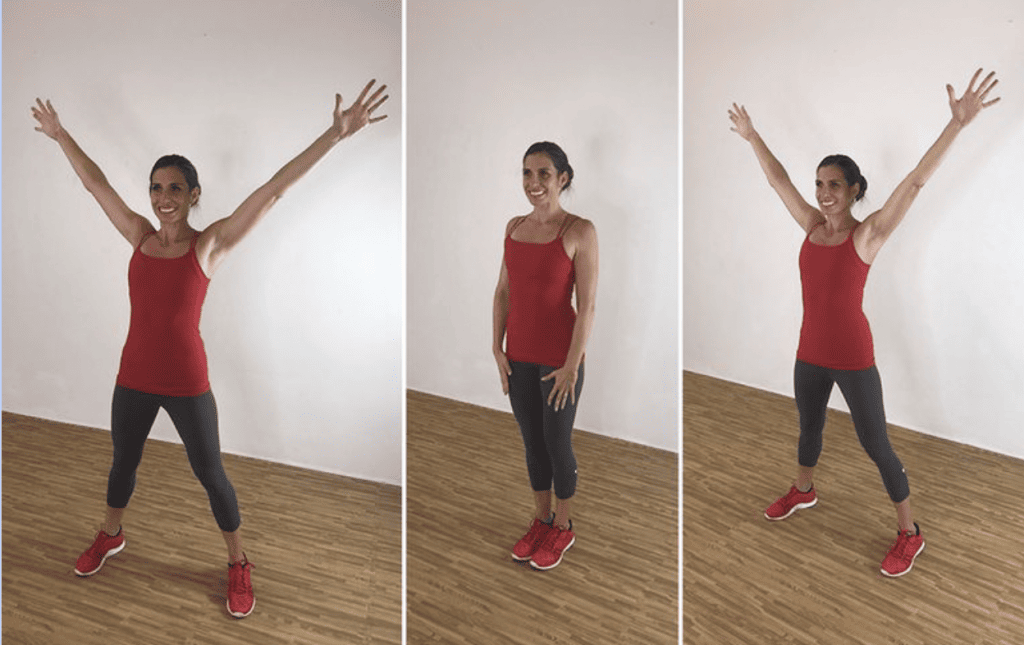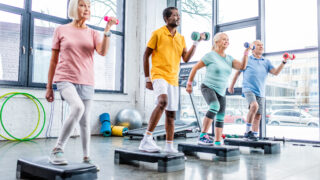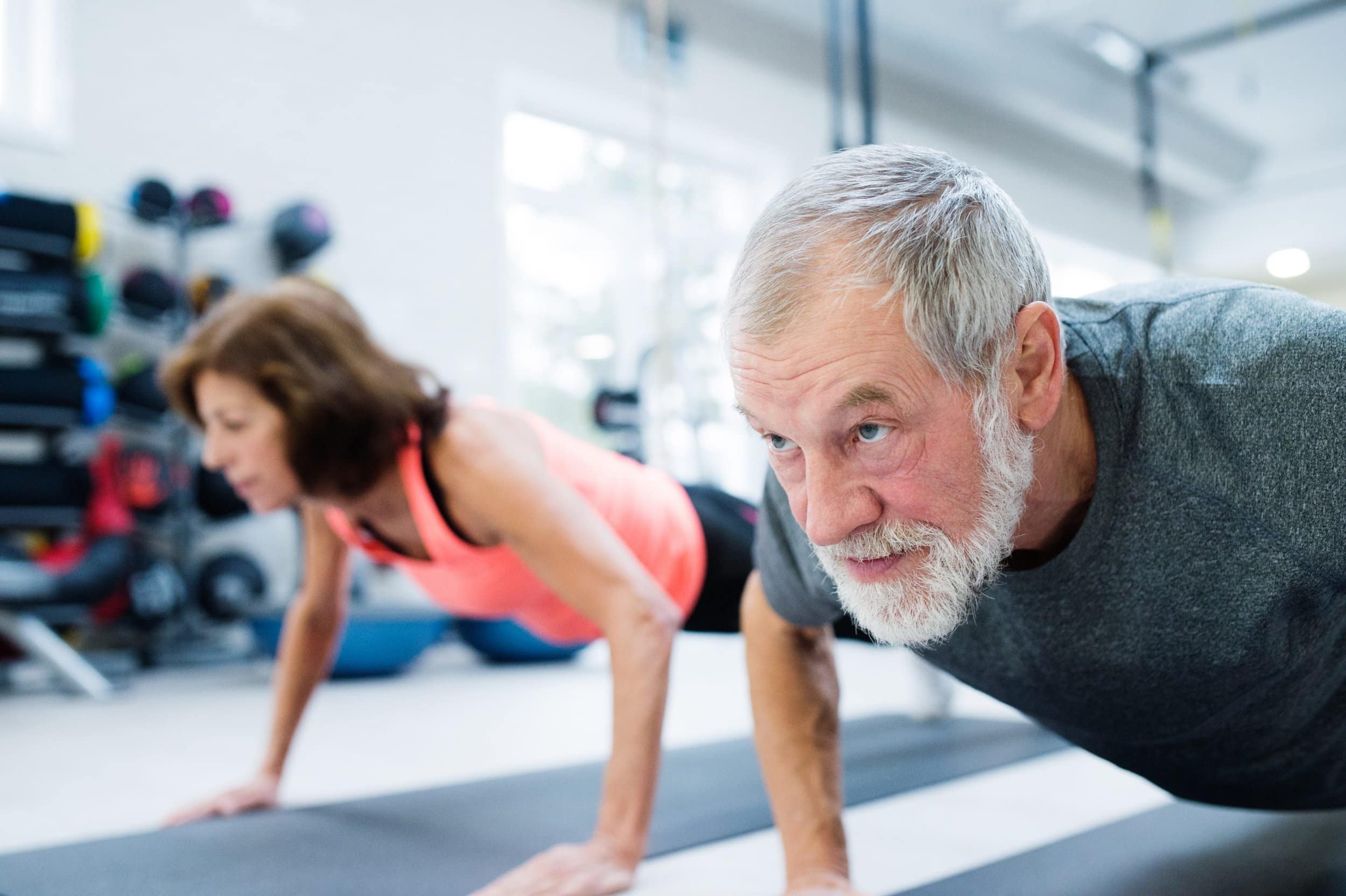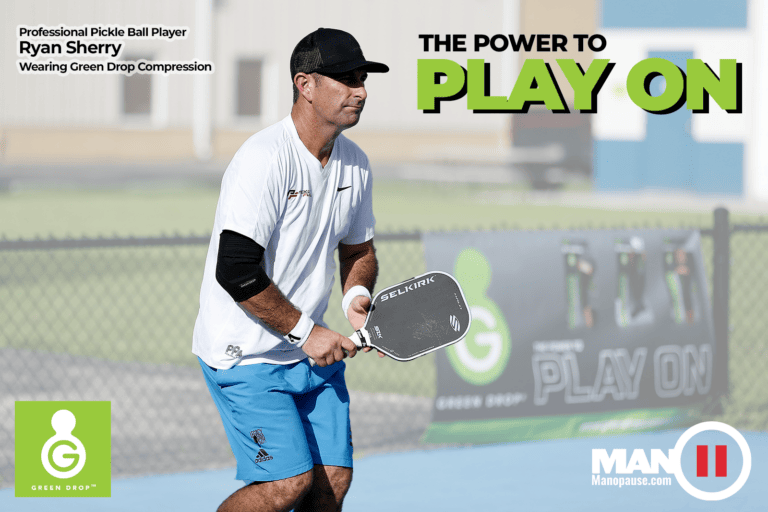So, you’re just getting into exercise? No sweat! Here are some tips on moving with an aging body.
Perhaps it was the advice of your doctor or purely your own choice, but you’ve decided it’s time to begin a regular exercise routine. That’s some boss move. As you hop on that treadmill, your body begins to remind you it’s no longer as elastic as it was in your teen years, and *ouch* please be softer on these joints!
There is often so much fear of pain or injury as we age, that people neglect to incorporate exercises into their routines at all. So, what are some movement options that feel less like a punishment on the bod and more like an enjoyable way to release tension and build strength (physically and mentally)? Giving yourself permission to move in new ways will allow you to feel stronger and more youthful. It may just take some simple tricks to adjust your movement, speaking with a care provider, and a healthy dose of patience to get there.
As always, we recommend speaking with your doctor or care teams before beginning anything you read on the Internet. With that said, these exercises are what you make them as far as intensity is concerned.
Here are a few ideas for ways to stay stronger with age:
Table of Contents
ToggleHave Your Back
Our backs do most of the heavy lifting for our bodies. Over time, bad posture and pressure on our vertebrae lead to loss of strength and overall alignment in our spines. This may cause pain throughout the whole body and can dramatically limit mobility. Focusing on stretching and strengthening your back — especially the lower back — can help you stand taller, reduce pain, and make you stronger while doing all your regular activities.
- Using weights or resistance bands
If your mobility allows for the use of weights, resistance bands, and moving your entire body, try targeting certain muscles through various at-home or gym workouts. Resistance bands are an incredible tool that uses tension and your own body weight while remaining light on the joints and can reduce the risk of injury compared to weights. They can also help with balance, which is especially important as we age. - Seated back extensions
This is a great option for everyone to practice throughout the day, whether you’re watching the news at home or getting ready to run a marathon. Doing these simple extensions every time you’re seated (or as often as you remember) can do wonders for your back, simply by focusing on lengthening the spine.
Start by sitting in a chair. Align your knees, ankles, and hips. While keeping a 90-degree angle at your elbows, press your upper arms into the back of the chair. Squeeze your shoulder blades together and engage your abdomen. This position, often called a heart opener, will push your upper back and ribs away from the seat. While here, you can add in slow shoulder or neck rolls for an added stretch. While it may not seem like much, doing this often will lead to a stronger core and lengthened spine, without the use of any weights!
Get Your Heart Pumpin’
Engaging in cardio is arguably one of the most important ways to care for our bodies and our most vital muscle — the heart! The American Heart Association recommends a minimum of 150 minutes of cardio a week to maintain heart health. If you have any heart or blood conditions, always consult your doctor before engaging in cardio-heavy exercises.
Don’t let that recommended time intimidate you. This doesn’t have to be a total sweat fest. There are many movements you can engage in that are lighter on the body than high-intensity workouts, such as:
- Jumping Jacks: While jumping may seem daunting for the joints, our body doesn’t really know the difference as to whether we leave the ground or not when it comes to cardio. Jumping jacks are a full-body exercise that engages the core, legs, and arms as well as gets your heart moving. Rather than jumping fully off the ground, you can modify the movement to simply stand on your toes and hold it for a few seconds, before coming back down to the heels of your foot. Use the full force of a jump and then hold it. Repeat about 20 times then rest. If you can jump off the ground, even the tiniest bit, be sure to focus on maintaining a lengthened spine and strong core to avoid injury.

- Swimming: One of the most joint-friendly and high-cardio exercises is swimming. Take a lesson or do it solo, the water is a great way to get in your daily movement. Check out the pool exercise section below if swimming laps doesn’t excite you.
- Walking: Walking is probably one of the most understated exercises in existence. It is one of the most human movements as bipedal mammals, helping to improve circulation, sleep, breathing, helps in weight loss, and even slow down mental decline. Throw on your favorite tunes, an audiobook, or just enjoy the sounds of your environment and get movin’. Focus again on maintaining a lengthened spine — shoulders back and tummy tucked — while walking. Try using an exercise watch or phone app to track your distance and cardio. You may be impressed with how amazing you feel after incorporating this into your daily routine, and tracking your progress can be a fun way to monitor your growth.
- Yoga: No, you don’t need to be upside down in a headstand with the flexibility of a contortionist to benefit from yoga. While yoga may feel like slow stretching or meditation, it is actually a great way to get the blood flowing throughout the whole body. Vinyasa Flow is a common mid-level yoga that can be a good starting place. Most instructors, whether online or in-person, will always advise opting out of any positions that are painful or too much for you. Read more below on yoga options for those with more limited mobility.
Pool Exercises
Even if you don’t suffer from diagnosed arthritis, our joints become worn and tired as we age. Exploring arthritis-friendly options can save you from pain later down the road. Using water as resistance is a fun way to strengthen those muscles without putting too much pressure on the joints and plus — it’s sweat-free! If swimming laps is not your thing, here are some other movements you can practice in the pool.
- Water walking: walk along the edge of the pool or march in place. Focus on keeping your back straight and really pushing those legs.
- Arm circles: move so the water comes up to your shoulders and extend your arms straight out to your sides to form a T. Face your palms down and move your arms in a circular motion about 20 times. Then repeat backward.
- Flutter kicks: Use a kickboard or hold the edge of the pool and simply… kick! Make as much of a splash as you can. Engage all parts of your legs and you’ll feel the burn in no time.
- Leg swings: Hold the edge of the pool and extend your opposite leg out. Hold it there for a few seconds and then, without dropping it, extend it to the side. Repeat and extend to the back. Focus on keeping your spine straight and abdomen engaged. Not only does this help with strengthening your legs and back, but is also a great hip opener. Take it as slow as you need to and gradually increase in intensity.
There are often classes available at many pools that can be a fun way to socialize and have guidance from a trained instructor. If you’re not able to take a class, here are some additional water exercises to explore.
Yoga
As mentioned above, yoga is a great way to get your cardio in, as well as full-body strengthening, balance, and stretching. If a full mat practice is too difficult on your body, here are some modified options:
- Chair Yoga: Think yoga but seated. Whether you’re in a wheelchair, have other mobility limitations, or simply want to get some exercise in at the office, chair yoga is a great option. Here is a great 25-minute chair flow you can practice at home.
- Yin Yoga: While Yin Yoga may seem “easy”, it’s not. BUT, it is a great option for those with chronic pain, arthritis, or other mobility limitations. Generally speaking, each pose is held for 4-7 minutes and focuses on matching your breath with deep, deep stretching. Keep in mind that this practice takes time to grow into. The first time you try it you may only last 15 seconds into the pose before you feel uncomfortable and want to move. The key reminder is to listen to your body — if you feel any pinching, move and adjust your pose. Here is a gentle 30-minute Yin Yoga flow to practice at home.
Adding more movement and exercise into your routines will not only lead to a stronger physical body but also a stronger state of mind. Increased confidence is the icing on the cake! But, we’ll repeat this time and time again, always check with your doctors before engaging in any physical activity that may interact with any medications you’re taking or mobility limitations you may be experiencing.
Bibliography:
“12 Benefits of Walking: Arthritis Foundation.” 12 Benefits of Walking, Arthritis Foundation, https://www.arthritis.org/health-wellness/healthy-living/physical-activity/walking/12-benefits-of-walking
“American Heart Association Recommendations for Physical Activity in Adults and Kids.” Www.heart.org, American Heart Association, 4 Aug. 2021, https://www.heart.org/en/healthy-living/fitness/fitness-basics/aha-recs-for-physical-activity-in-adults
“Exercises Exercise for Older People – Glasgow Life.” NHS.uk, NHS Choices, https://www.glasgowlife.org.uk/media/5781/chair-based-exercises.pdf
TodayShow. “Feeling the Aches and Pains of Getting Older? These 4 Exercises Can Help.” TODAY.com, Brianna Steinhilber, 14 Mar. 2022, https://www.today.com/health/diet-fitness/anti-aging-exercise-rcna19914
















